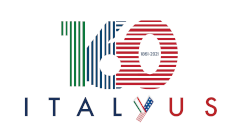A Great Story
On March 17, 1861, the Kingdom of Italy was born. A little less than a month later, on April 13, following the outbreak of the American Civil War, Secretary of State William H. Seward “acknowledged receipt” of Cavour's dispatch - which reported the assumption of the title of King of Italy by Vittorio Emanuele II - delivered to him by the then Minister Resident in the United States Giuseppe Bertinatti. What could appear as a bureaucratic formality initiated diplomatic relations and marked the beginning of a friendship that is 160 years old today.
In reality, the diplomatic step gave institutional substance to a bond that had been intertwined for some time and knotted by the contacts of the patriots of the Risorgimento on American soil. Historians recall the active benevolence with which the American side looked to the Italian cause. Traces of this emerge in the expedition of Garibaldi's Thousands departed from Bogliasco, as well as, on the opposite side, in the participation of Italian volunteers in the Civil War.
“Fast forward” to the present day.
Italy and the United States cultivate a deep friendship and since the Second World War they have been founding members and active protagonists of an extraordinary community of shared values and principles, the Atlantic Alliance. The contribution offered by the United States to the liberation of Europe and Italy from Nazi-fascism is invaluable, as is our timeless gratitude to the American people.
The transatlantic bond combines the common foreign and defense policy with harmony in social relations, cultural, economic, commercial and scientific-technological cooperation. Since that distant spring day of 1861, relationships have flourished in every sector of civil life, as in the field of research, which involves scholars, universities, businesses and professionals.
Ties made up of people, such as the many generations of Italians and Italian Americans who contribute every day to the social, cultural and economic growth of the United States, and of which there is a recognizable trace right down to the toponymy of many American cities and regions. A “contemporary image of the permanent flow of intellectual and professional energies that enrich our mutual values”, as the President of the Italian Republic Mattarella defined it in 2019, on the occasion of his most recent visit to the United States.
Today Washington and Rome, loyal allies, face the challenges of an ever-changing global context, members of the same community of values that recognizes itself in NATO, in which Italy participates with conviction and renown commitment, and cooperates in fora like G7, G20, OCSE and the United Nations.
This applies, in the first place, to the main challenges to international peace and security, for which Italy gives its support, as happened in Afghanistan and Iraq, in the Balkans, in the Horn of Africa and in the Sahel, within the scope of the Coalition against Daesh and transnational terrorism. It applies, more than ever, to the common fight against the pandemic and to the fight against climate change, truly global challenges in the context of which Italy currently offers its contribution as President of the G20 and co-president of COP26.
160 years during which Italy and the United States have strengthened their democratic path, shared the same values of freedom, promoted human rights, respect for minorities, the rule of law.
160 years of mutual commitment, including in the advancement of the space frontiers, on the Orbiting Station and, today, on Mars.
Immigration and the Italian community
The excellent relations between Italy and the United States find an extraordinary driving force in the presence of a large and qualified Italian and Italian American community. Italians in America have traditionally made their way into all areas of the country's life (politics, economics, art, cinema, science and research, sports). Their presence constitutes a bridge at the highest level between Italy and the US and it continues to strengthen a web of bilateral relations that is unique in the world and capable of renewing itself daily in every field, from science to research, from innovation to technology.
In recent years, traditional immigration, which began in the second half of the nineteenth century and continued alternately in the last century, has been accompanied by a new growing flow of arrivals from Italy, also testified by the number of compatriots registered in our consular registry which since 2016 to 2020 has increased by 50 thousand units, and today reaches the threshold of 314 thousand subscribers.
Immigration is mainly made up of professionals and qualified personnel: university professors or students, economists at International Financial Institutions, scientists and researchers at numerous universities, think-tanks and prestigious centers, such as the "National Institutes of Health" and NASA.
There are also numerous young Italians who invest in the country, while retaining the main center of their interests in Italy.
According to the data of the last census in 2010, the Americans of Italian origins are 17.3 million (fourth ethnic group of European origin after Germans, Irish and English). The two main Italian American organizations, NIAF and OSIA, estimate that there are at least 25 million Americans of Italian origins. For years we have witnessed a growing attention to Italy by the Italian American community, attracted by the Italian lifestyle and our quality of life, as well as by the affirmation of the image of Italy in the most diverse fields, from culture to fashion, from design to gastronomy and enology, from research to advanced technology.
Hence, a direct consequence is the growth of tourist trips to Italy, the increase in students of Italian language and culture, as well as the increase in applications for dual-Italian citizenship.


